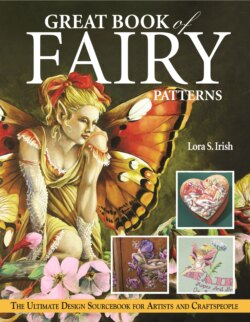Читать книгу Great Book of Fairy Patterns - Lora S. Irish - Страница 15
На сайте Литреса книга снята с продажи.
ОглавлениеA
H
ISTORY
OF
F
AIRIES
IN
L
EGENDS
OR How did Fairies, Faes and
Flutterbyes come to be?
s an artist I have always believed that the first principle of creating any
artwork is that the artist needs to clearly know and understand the sub-
ject that he is representing. Any subject that an artist renders deserves to
be researched so that the final work truly is representative of the actual object,
scene or story. Art is viewed as stories written in color, as visual tales with
visual morals and visual truths. So to include errors in the subjects of our paint-
ings because we did not take the time to learn about what we are creating
passes on misinformation.
Over the last many months I have read countless folklore, and with each
story, I have faithfully written down the descriptions provided by our ancestors.
Fairy illustrations and paintings are plentiful, as they have captured the minds
and hearts of artists for centuries. These wonderful bits of artwork and lore
provide a wide range of descriptive information on our subject of Fairies, which
are sometimes referred to as Faes and Flutterbyes.
It should be noted, in passing, that there are numerous stories called “Fairy
tales,” yet only a few of these refer directly to the race of the Fairy people.
Under the category of literature called Fairy tales, you will find many different
magical creatures and mythical races. These stories tell about brownies, elves
and gnomes, talking sly foxes and wise ravens and ogres and spirits that live in
the darkness. A few tell about our subject, the Fairy. So, reading a Fairy tale
does not necessarily mean you will read about Fairies.
CHAPTER TWO
7
G
REAT
B
OOK
OF
F
AIRY
P
ATTERNS
A
